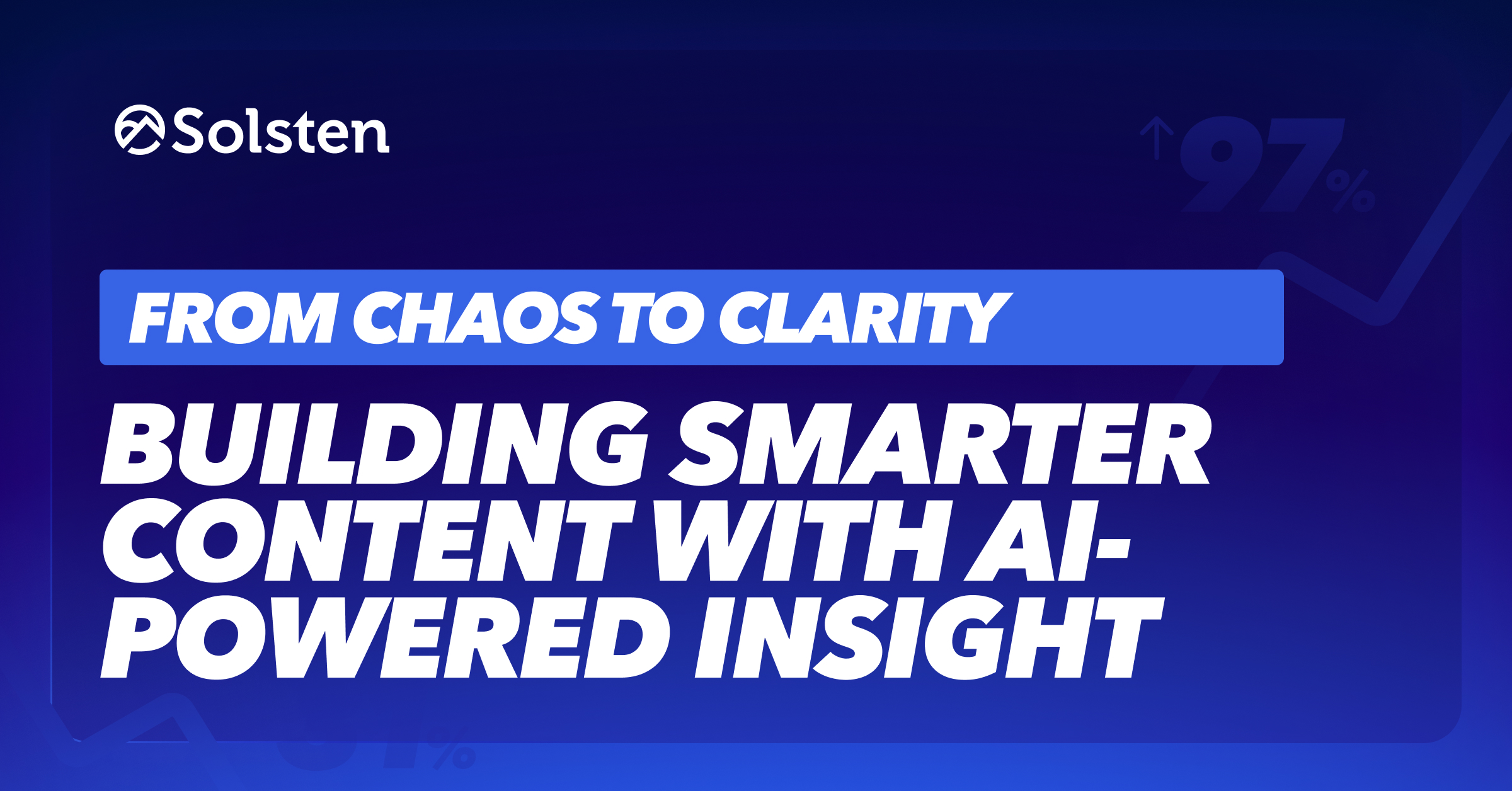Content Personalization: The Human Spark Meets Machine Spee
You’re staring at a Google Doc filled with notes, brainstorms, voice memos you haven’t transcribed. Maybe a loose outline lives on a whiteboard, three time zones away. You know there’s a story here – a good one, even – but turning all that semi-formed input into something sharp, engaging, and personalized for your audience? That’s the mountain.
Now imagine if the mountain moved for you.
The dream of content creation and content personalization has always been about connection: reaching the right person, at the right moment, with words that feel like they were meant just for them. But the act of getting there – navigating data, decoding your audience, iterating on structure, tone, timing… It’s exhausting. It’s no surprise creators often ask: “Do I need a whole team just to keep up with personalized marketing?”
Here’s the shift: You don’t. Not anymore.
Welcome to the new mindset: AI doesn’t replace creativity—it expands your range. It helps you go faster, go deeper, and stay more human. Especially when it’s grounded in what truly matters: understanding the psychology of your audience.
Why Content Creation Feels So Different Right Now
The speed of content has skyrocketed – but your creative hours haven’t. As audiences start to expect content personalization at Netflix-level precision, creators are under pressure. And not just from algorithms.
- 80% of consumers are more likely to buy from a brand that offers personalized experiences
- Over 70% of Gen Z expects content that “understands” them, not just informs them
- And yet, only 29% of marketers feel they’re doing personalization well
This mismatch creates what we call The Personalized Pressure Gap – the growing disconnect between what audiences crave and what most creators have the bandwidth to create.
Enter generative AI. More than just a souped-up autocomplete, strategic creators are using tools like ChatGPT, Claude, and yes, even more psychology-aware solutions like Solsten’s Elaris to:
- Map raw inputs to distinct audience segments
- Translate voice notes into adaptive storytelling formats
- Personalize headlines, hooks, and call-to-actions based on behavioral traits
But speed isn’t the victory lap. What matters most? Precision and resonance. Making content that lands not just fast – but deep.
How AI (Actually) Helps You Create Smarter, Personalized Content
Let’s zoom in on what AI makes possible today, particularly when it’s fed with the right psychological and behavioral context:
1. Turn Audience Data into Narrative Gold
Ever tried writing for “a 35-year-old dog-loving creative technologist living in Austin with a side hustle in NFT art”? Tough to capture that vibe on the fly, right?
AI, when powered by psychologically rich audience profiles, can:
- Surface tone, lexicon, and interest patterns for that exact persona
- Suggest storytelling formats that align with how they naturally engage (video > blogs? Threads > TikToks?)
- Adapt your message across segments without feeling… Frankensteined
Think of it as an insight compass. You feed in the direction—AI helps you find the most resonant path.
2. Transform Raw Inputs into Ready-to-Use Formats
We all have drafts, ideas, even livestream rants that could be magic… if we had an extra 40 hours. Generative systems can now ingest raw text, audio, and even user conversations, then:
- Identify key themes and sentiment arcs
- Suggest compelling hooks or personalization layers
- Generate content outlines with audience behavior baked in
You’re not just creating faster. You’re creating closer to the truth of what your audience needs.
3. Scale Without Losing Your Voice
This is a big one. Ask any creator and you’ll hear the same fear: “I don’t want to sound like a robot. Or everyone else.”
The good news? When done right, AI enhances your signature voice. With grammar models trained on your prior content, and behavioral insights guiding channel/language/pacing, personalized marketing becomes a smart mirror, not a mimic.
Keywords, variation, sequencing – the technical stuff – is handled. What you focus on? Tone, story, soul.
4. Uncover What Actually Works (Not Just What Gets Clicks)
Content metrics have long been reactive. Post, wait, tweak, repeat.
But psychology-aware AI tools – ones that analyze cognitive engagement, attention thresholds, and subconscious response (like Elaris) – let you iterate before you publish. You can:
- Predict emotional impact of story arcs
- Pre-test language against different psychographic clusters
- See where readers will cognitively drop off – before they actually do
It’s not about vanity metrics. It’s about deeper behaviors that shape belonging, action, and affinity.
Let’s Get Practical: Small Shifts, Big Impact
Here’s how to start weaving AI into your content personalization workflows—without hiring a SWAT team.
Build Your Input Map First
Before you ask AI anything, map what you already have:
- Raw inputs: voice notes, brainstorm decks, interviews, social comments
- Goals: retention? subscriber growth? reactivation?
- Segments: beginner? power user? curious bystander?
Pattern recognition is AI’s superpower, but it’s your inputs that make it strategic.
Define “Personalization” for Your Brand
Not every audience wants a DM with their first name. True content personalization can include:
- Content mood: humorous, earnest, urgent?
- Delivery timing: when your people actually read/watch/listen
- Visual preferences: what formats your segments engage with most often
Write these down. Let them be your north star.
Prototype → Test → Refine
Work in 3-step loops:
- Draft AI-generated assets using your mapped segments
- Test internally or with micro-audiences for tone/personalization fit
- Refine based on interactivity, cognition, or conversion insights
Think of it like creative jazz—not every note is planned, but every note belongs.
Choose Tools That Think Like You
The best creator AI tools aren’t just smart – they’re empathetic. Look for systems that:
- Ingest behavioral psychology data
- Highlight non-obvious tone shifts
- Let you preview content through different audience lenses
Solutions like Elaris focus not just on what people do, but why they do it. And that why is your real competitive advantage.
Future You: More Creative, Less Burned Out
Imagine having a silent writing partner who knows your audience almost better than you do.
A system that listens to your off-the-cuff workshop recording… then spins up three tailored article formats, each tuned for a different psychographic.
A brainstorm engine that connects emerging cultural signals with your brand narrative before your competitors even notice the trend.
That’s where we’re headed. As personalization becomes table stakes, and audience psychology becomes the real differentiator, creators who harness AI’s potential – ethically, artfully, and authentically – will thrive.
Not because they create more. But because they create deeper.
More connected.
More personalized.
Because content personalization that actually hits home? It starts from a place of knowing – and grows through tools that help you scale that knowing into action.
If you’re curious about how far audience empathy + AI can take you, you’re already on the right path. Dive deeper with Elaris and explore how emotional intelligence can futureproof your personalization-play, without the guesswork.
Trusted by forward-thinking brands shaping the next era of psychology-led marketing.
Want in? Join the Elaris waitlist today, and be part of growth that actually resonates.






